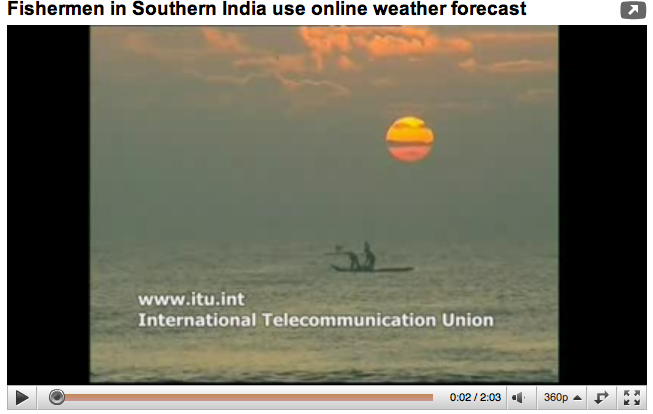According to a Policy Brief by ESCAP (United Nations Economic and Social Commission for Asia and the Pacific), telecentres have the potential to play a key role in disaster risk management at the community level. Described as community centres that provide public access to Information and Communication Technologies (ICTs) such as telephones, computers and the Internet, their rapid adoption across the globe has been accompanied by a surge of additional services (e.g. e-learning and training, e-government and financial services) that respond to the needs of the local demand.
 In addition to services associated with the use of ICT tools, sources in the field have also indicated their role strengthening social networks, empowerment and participation, as well as fostering productive processes at the local level through the provision of employment and skills, as well as support services for micro-enterprise activities, among others.
In addition to services associated with the use of ICT tools, sources in the field have also indicated their role strengthening social networks, empowerment and participation, as well as fostering productive processes at the local level through the provision of employment and skills, as well as support services for micro-enterprise activities, among others.
In rural communities of developing countries, with limited capacities and resources to respond to the effects of extreme natural hazards, drought, landslides, floods, and to the impacts of these events on local social systems (e.g. health, infrastructure, transportation, migration), the potential of telecentres for disaster preparedness and response is emerging as an area of increasing interest.
ESCAP’s Policy Brief suggests that telecentres could be key in re-defining the top-down approach to disaster management, towards community-based strategies where access to information and knowledge is facilitated by the use of ICTs.
The document identifies four main areas of telecentre potential in the field:
- Capture and disseminate indigenous knowledge for community-based disaster risk management (DRM), including local knowledge of hazards, vulnerabilities and available resources, using the centre as a knowledge hub in support of preparedness strategies;
- Support of information bases for disaster risk management, as telecentres could help organize community inputs into the planning and execution of disaster risk reductions actions (e.g. digitized resource maps, chronological logs of disasters);
- Provision of awareness raising and training, based on locally-based needs and priorities and disseminated broadly through telecentre networks and the support of open-source collaboration software, and
- Communication of risk and last-mile early warning in local communities, potentially acting as a command centre for disaster response and coordination of efforts.
These areas of potential are starting to be reflected in experiences in the field. From Village Resource Centres in India, to Informatics Clubs in Colombia, telecentres have begun to play a role in way communities organize themselves and respond to the challenges posed by climate-related hazards and changing climatic trends.
But along with areas of potential, ESCAP also identifies prevailing challenges in regards to the use of telecentres in disaster risk management, namely:
- Lack of resources for capacity building and training.
- The need to ensure the availability of critical connectivity (power supply, connectivity and telecommunication equipment) in areas affected by climate-related disasters.
- The sustainability of the telecentres.
In this last regard, and as part of a series of policy recommendations, ESCAP suggests that integrating telecentres as part of national disaster management programmes could enhance their sustainability whilst fostering the above mentioned areas of potential.
 This document not only evidences the need to deepen our understanding of the role and potential of telecentres within developing contexts that are highly vulnerable to the potential effects of climate change, but also poses key issues for further discussion, among them:
This document not only evidences the need to deepen our understanding of the role and potential of telecentres within developing contexts that are highly vulnerable to the potential effects of climate change, but also poses key issues for further discussion, among them:
- The importance of community leadership and empowerment within disaster risk management and preparedness strategies, & the enabling potential of ICT tools towards community-based approaches. In this regard, the physical and social spaces provided by telecentres at the local level, as places to gather and share, could be pivotal to strengthen a resilient social fabric.
- The potential role of telecentres in livelihoods recovery and strengthening (in both pre & post-disaster scenarios).
- The key contribution of indigenous knowledge within DRM and climate change-related strategies, and thus the potential of telecentres to help compile, digitize and disseminate that knowledge.
- The need to ensure an effective articulation of efforts between the myriad of stakeholders at the local, regional and national levels that play a role within DRM, mitigation and adaptation strategies. Among them, telecentres play a key role helping integrate and raise the voice of rural communities that are often excluded from wider socio-economic and political systems, and that are the most vulnerable to the impacts of natural hazards.
In many remote communities of the global South, telecentres constitute a key component to be considered within strategies to respond to the uncertainties and the challenges posed by a changing environment. They also hold an important potential towards the reduction of local vulnerabilities that needs to be further explored in light of the current climate change debate.
